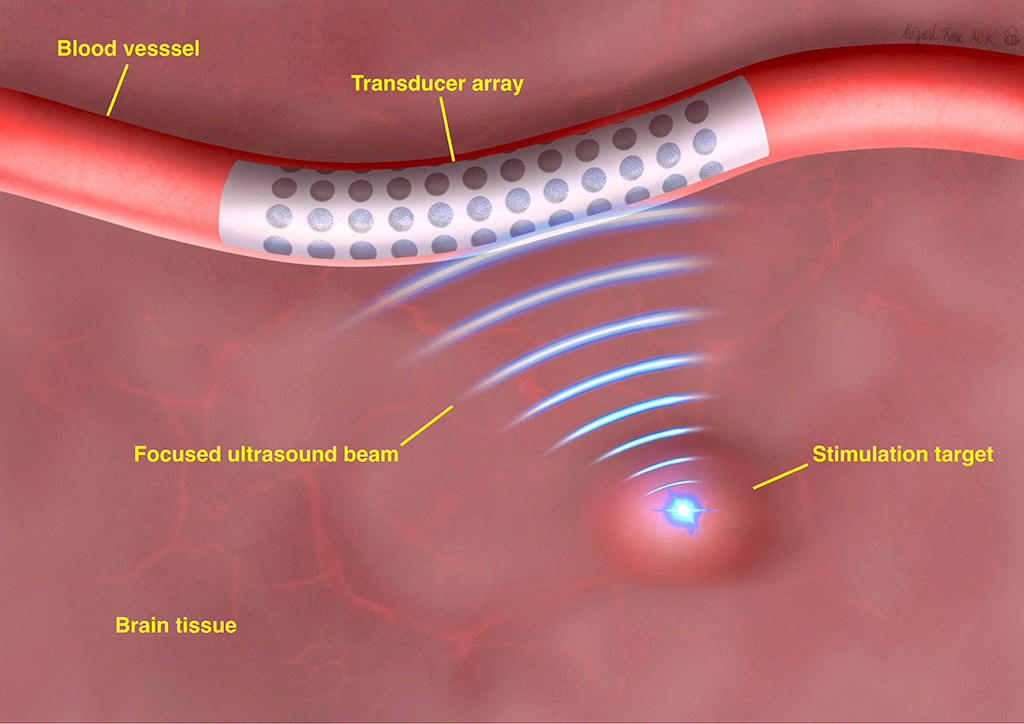World’s First Brain Stimulation Treatment for Neurological Diseases Uses Ultrasound Technology
Posted on 19 Dec 2023
The effectiveness of drug treatments for individuals with neurological diseases like Parkinson's disease and epilepsy often diminishes over time, necessitating alternative therapeutic approaches. Movement symptoms in such conditions are typically the result of disorganized neural signals in the brain areas governing movement. Deep brain stimulation, a technique that disrupts these erratic signals, has shown promise in managing tremors and other movement-related symptoms. It also holds the potential for controlling, and possibly even preventing, seizures in epilepsy patients. Now, researchers are exploring a groundbreaking brain stimulation treatment that employs ultrasound, delivered through a device located inside a brain blood vessel, to address symptoms of neurological disorders.
A group of biomedical engineers at The University of Melbourne (Victoria, Australia), along with their colleagues, are developing ‘endovascular focused ultrasound’ technology, which could substantially enhance the lives of those with neurological diseases. Currently, electrical brain stimulation is a treatment option, but it requires invasive brain surgery to implant electrodes and often lacks precision in stimulating the correct brain regions. The accuracy of electrode placement is crucial; slight misplacements can lead to diminished efficacy and unintended side effects. The team's endovascular-focused ultrasound technology, anticipated to be available in over a decade, presents a safer alternative to existing treatments, avoiding the need for open brain surgery and utilizing ultrasound instead of electrical stimulation.

This innovative method involves inserting an array of tiny transducers permanently into a brain blood vessel, likely through the jugular vein, akin to current stent insertion practices in the heart and brain. These transducers would be connected to a chest-implanted device similar to a pacemaker, which would power and control the ultrasound stimulation. Thanks to advancements in nanofabrication technology, which is also used in computer chip manufacturing, researchers can produce extraordinarily small ultrasound transducers. These transducers are fine enough to fit inside a blood vessel, being narrower than human hair. When arranged in an array, they can precisely focus the ultrasound beam on a specific brain target, minimizing stimulation to surrounding tissue. The team aims for a successful initial demonstration of this novel brain stimulation method within a three-year project timeline and is hopeful that the first human trials could commence by 2030.
“We have demonstrated preliminary safety and efficacy of implanting neurotechnology within cortical blood vessels to enable people with paralysis to control external equipment with their minds,” said Professor Nicholas Opie from the University of Melbourne Department of Medicine. “Ultrasound is a new method of stimulating the brain and has the potential to provide transformative treatments for people with neurological disorders such as Parkinson’s, epilepsy and depression.”
Related Links:
The University of Melbourne














